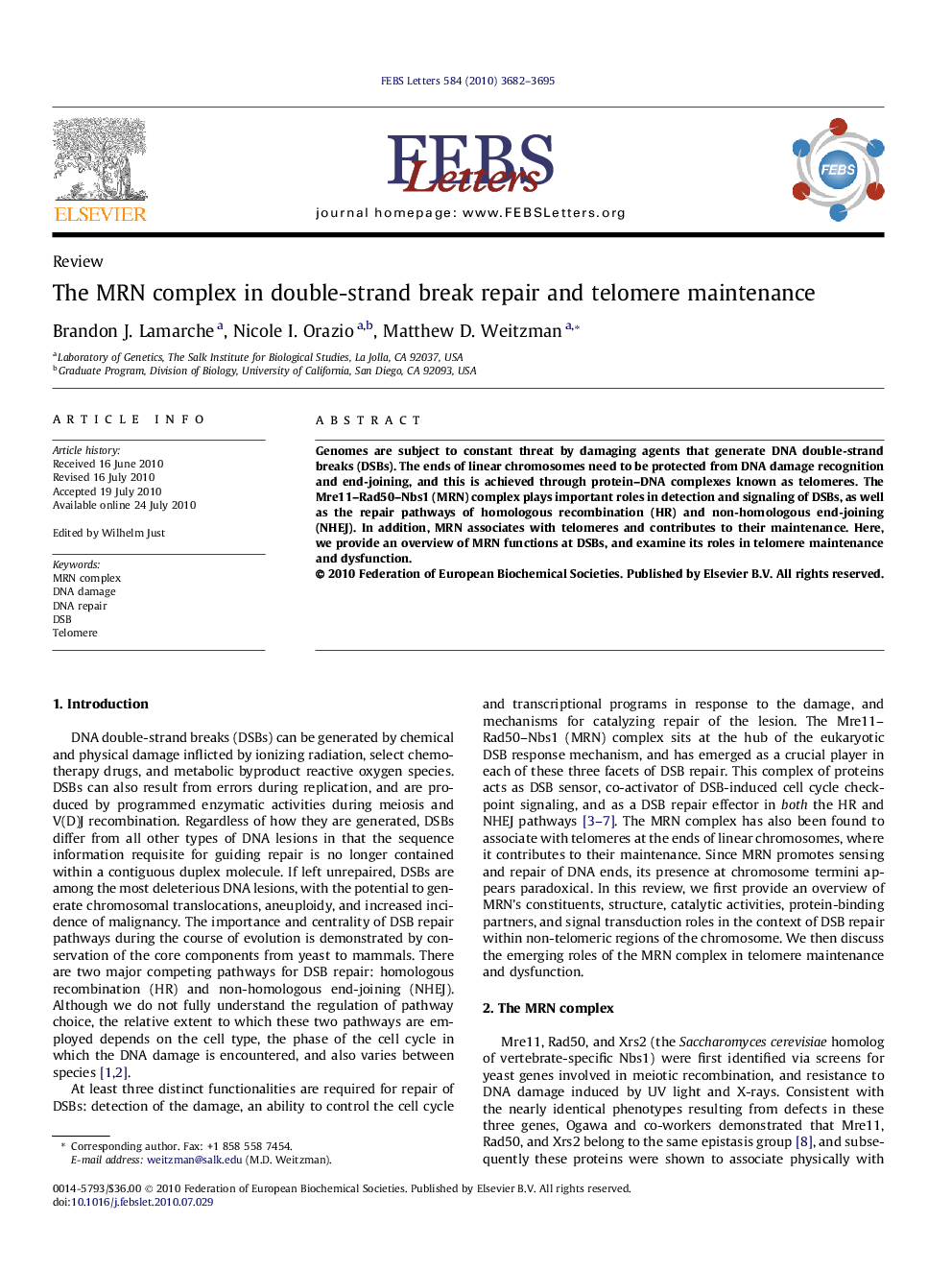| Article ID | Journal | Published Year | Pages | File Type |
|---|---|---|---|---|
| 10871824 | FEBS Letters | 2010 | 14 Pages |
Abstract
Genomes are subject to constant threat by damaging agents that generate DNA double-strand breaks (DSBs). The ends of linear chromosomes need to be protected from DNA damage recognition and end-joining, and this is achieved through protein-DNA complexes known as telomeres. The Mre11-Rad50-Nbs1 (MRN) complex plays important roles in detection and signaling of DSBs, as well as the repair pathways of homologous recombination (HR) and non-homologous end-joining (NHEJ). In addition, MRN associates with telomeres and contributes to their maintenance. Here, we provide an overview of MRN functions at DSBs, and examine its roles in telomere maintenance and dysfunction.
Related Topics
Life Sciences
Agricultural and Biological Sciences
Plant Science
Authors
Brandon J. Lamarche, Nicole I. Orazio, Matthew D. Weitzman,
